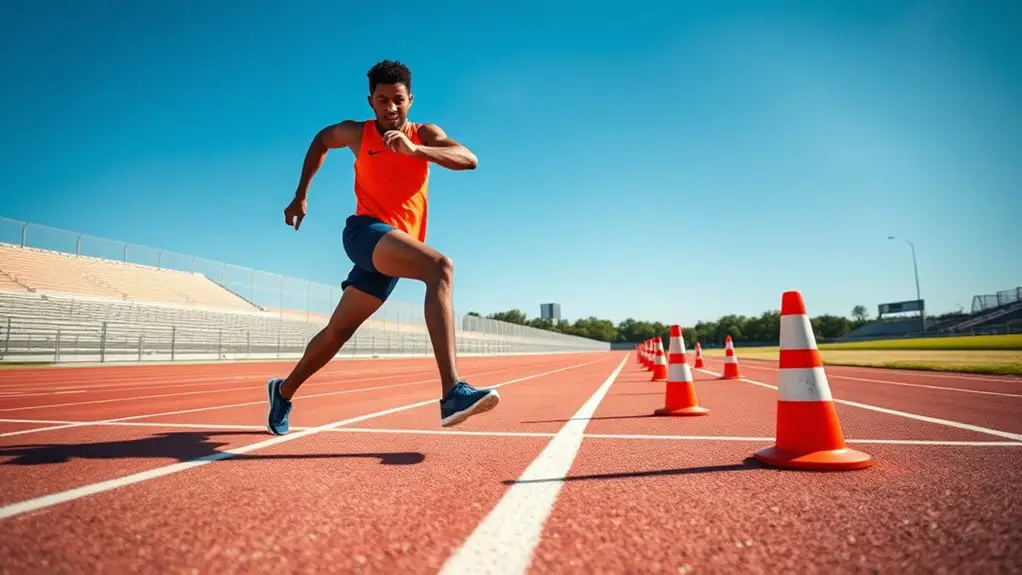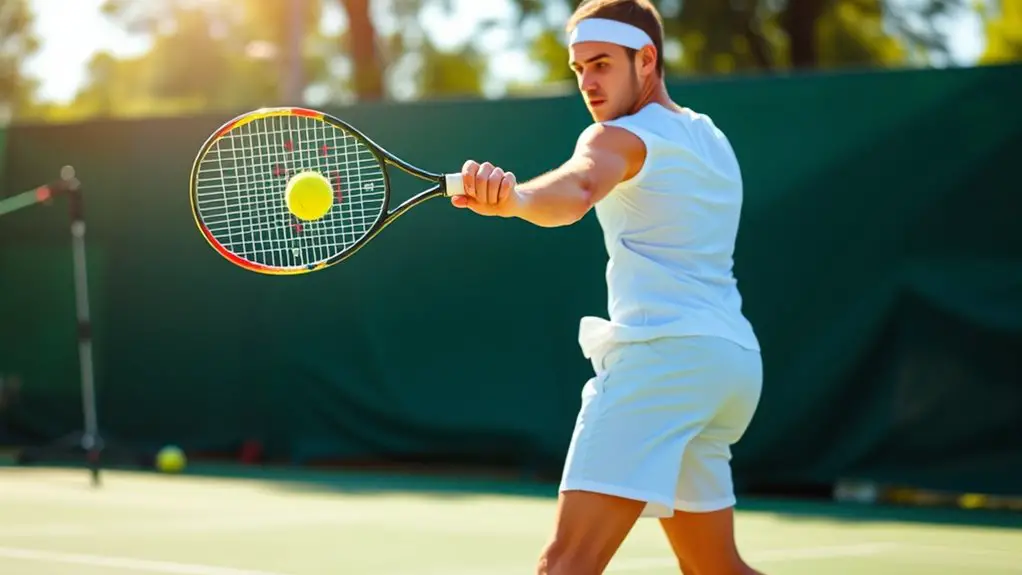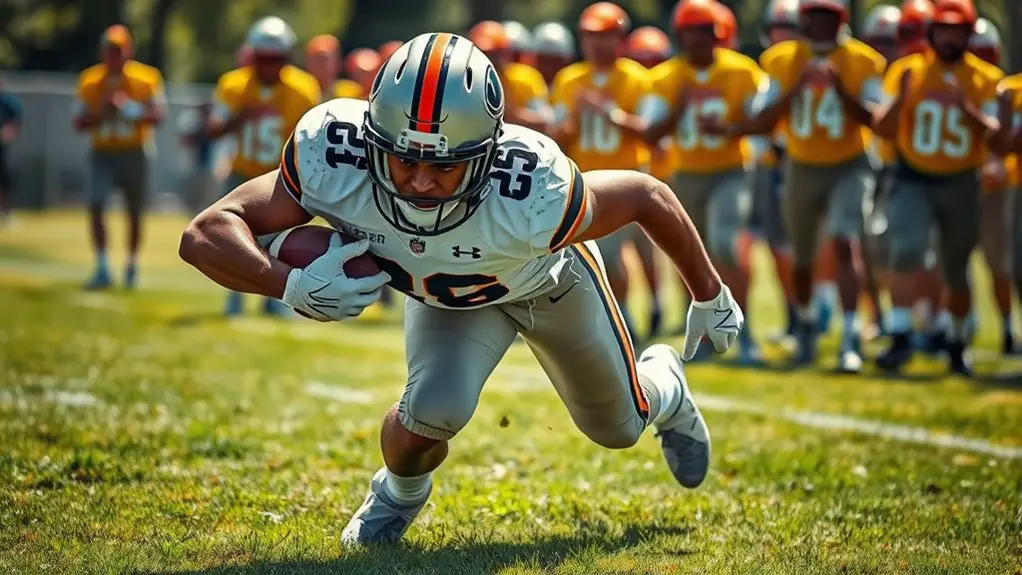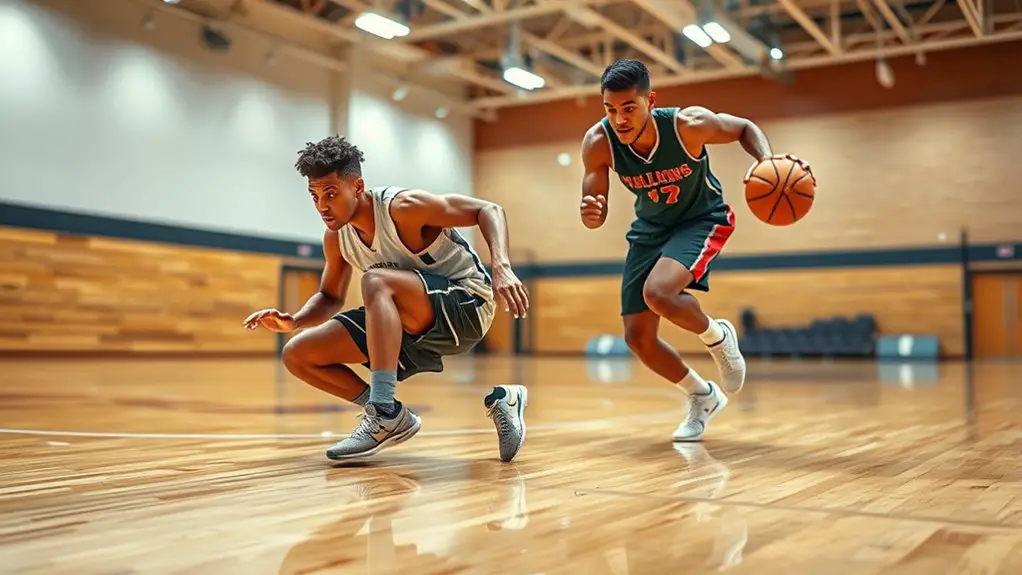To train for a faster change of direction, focus on drills that improve agility, coordination, and reaction time. Incorporate ladder drills and cone drills to enhance foot speed and sharpen your pivots. Strength training boosts lower body power, while flexibility exercises improve your movement fluidity. Measure your progress regularly and set specific goals to stay motivated. There are even more techniques and drills that can take your training to the next level, so keep exploring!
Understanding the Importance of Change of Direction Training
Understanding the importance of change of direction training is essential for athletes looking to enhance their performance. This type of training not only improves your speed but also boosts your agility, allowing you to navigate the field or court with ease. When you master quick pivots and sharp cuts, you gain the freedom to outmaneuver opponents, turning the game in your favor. You'll find that effective change of direction skills can elevate your overall athleticism, giving you a competitive edge. By incorporating specific drills into your routine, you can develop the reaction time and body control needed for those critical moments in play. Embracing this training will empower you to push your limits and release your full potential.
Key Components of Agility and Footwork
Agility and footwork are the cornerstones of effective change of direction, enabling athletes to respond quickly to dynamic game situations. To enhance these skills, focus on balance, coordination, and reaction time. Balance lets you maintain control during rapid movements, while coordination guarantees your body parts work seamlessly together. Reaction time is essential; the quicker you can respond to stimuli, the better you'll navigate the field or court. Also, don't overlook the importance of body awareness; knowing your positioning can make a significant difference. Finally, flexibility plays an important role in allowing for fluid movements. Embrace these components, and you'll find yourself moving with greater ease and speed, ultimately gaining an edge over your competition.
Essential Drills to Improve Quickness
To maximize your quickness on the field or court, incorporating specific drills into your training routine can make a world of difference. Start with ladder drills; they'll enhance your foot speed and coordination. Next, try cone drills, focusing on explosive cuts and rapid direction changes. Shuttle runs are also essential—these improve your acceleration and deceleration while mimicking game scenarios. Don't forget about plyometric exercises like box jumps, which build reactive strength. Finally, incorporate sports-specific drills that mirror the movements in your game. Consistency is key; practice these drills regularly, and you'll notice significant improvements in your quickness. Embrace the freedom your enhanced agility brings, allowing you to outmaneuver opponents with ease.
Incorporating Strength and Flexibility Exercises
While quickness is essential for change of direction, strength and flexibility also play an important role in enhancing your performance. Strong muscles provide the power needed for explosive movements, while flexibility helps prevent injuries and allows for better range of motion. Incorporate exercises like squats, lunges, and deadlifts to build lower body strength. Don't forget your core; planks and rotational exercises can boost stability. For flexibility, add dynamic stretches like leg swings and static stretches post-workout to keep your muscles loose. Yoga or Pilates can also be excellent for improving your overall flexibility and body awareness. By blending these strength and flexibility exercises into your routine, you'll feel more agile and ready to change direction with ease.
Tips for Measuring Progress and Setting Goals
After incorporating strength and flexibility exercises into your routine, it's important to track your progress and set clear goals. Start by measuring your current change of direction speed—use a stopwatch or a timing app during drills. Record your times and compare them weekly to see improvements. Set specific, achievable goals, like reducing your time by a certain percentage within a month. Don't forget to celebrate small victories along the way; they'll keep you motivated. Consider using visual markers to track your drills, and adjust your training plan based on your progress. By regularly evaluating your performance, you'll gain insights into what works best for you, empowering you to take control of your training journey and achieve the results you desire.
Frequently Asked Questions
How Does Change of Direction Training Benefit Sports Performance?
Change of direction training boosts your agility, enhances balance, and sharpens reaction times. You'll notice improved performance in games, as you'll navigate quickly and efficiently, making those essential plays that set you apart.
Can Change of Direction Training Reduce Injury Risk?
Yes, change of direction training can help reduce injury risk. It strengthens muscles, enhances stability, and improves coordination, all essential for maintaining control during sudden movements, ultimately letting you play freely and with greater confidence.
What Age Is Appropriate to Start Agility Training?
You can start agility training as early as age six, but it's essential to guarantee the exercises are age-appropriate and fun. Focus on developing coordination and balance before advancing to more complex movements.
How Often Should I Train for Agility Improvements?
You might wonder how often you should train for agility improvements. Ideally, aim for two to three sessions a week. Consistency is key, but don't overdo it; balance is essential for progress and freedom in movement.
Are There Specific Shoes Recommended for Agility Training?
When it comes to agility training, you'll want shoes that offer good grip and support. Look for lightweight, flexible footwear designed for quick movements, letting you feel free and confident during your workouts.




